June 22 Newsletter
Hi everyone,
It’s been a while since the last one of these; I hope you’ve all been well since the last installment. Where I’m writing from, we’ve been in Phase Two of reopening for a few weeks now. It’s a relief to be able to do some normal things again, albeit in an abnormal way. At church, for example, everyone wears a mask, every other pew is taped off, singing has been suspended, there are no altar servers, and bottle-bearing ushers spray each communicant’s hands with sanitizer. I’m happy to report that when I go outside, most everyone continues to wear a mask. I hope my friends in New York have similar experiences when Phase Two goes into effect next week.
In other news, chances are that I will be “leaving” New York at the end of next month. I put “leaving” in quotes because I’ve been in Massachusetts since March, but I expect to be moving my stuff out and closing my lease. I’m not sure yet where I’ll end up next; perhaps I’ll land in Boston. Any job leads would be appreciated.
Best,
-Matt
Books
Joyce’s Voices by Hugh Kenner (Dalkey Archive)
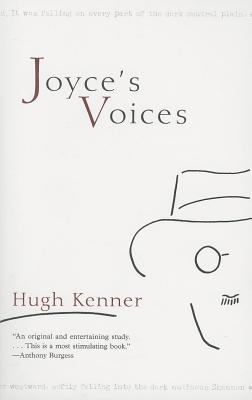
This was my reading for Bloomsday this year, because I am precisely the kind of person who likes picking a Bloomsday book to read. Judge me as you will.
When my copy arrived, hand-delivered by the great Root & Press bookstore, my dad mentioned to me that he’d read this as an undergraduate. This goes to show two things: First, like father, like son. Second, this book has staying power.
Kenner’s argument is basically that we can read Ulysses as a struggle between two narrators, one who records the quotidian stream-of-consciousness of Bloom and Stephen and another who delights in parody, pastiche, mockery, and excess. As June 16 wears on, the parodist grows ever more powerful, so that whole chapters go by without nary a word from the realist narrator.
Kenner’s basic argument strikes me as a valid and useful way to read Ulysses, though — as with all Kenner I’ve read — he sometimes stretches too far in his mental leaps. Some of those leaps, I think, are made solely to impress the readers with Kenner’s acrobatic skills. Criticism as performance and criticism as demonstration of brilliance have their place, and perhaps nowhere more so than in discussion of Ulysses, one of the world’s great overeducated books.
Misère: The Visual Representation of Misery in the 19th Century by Linda Nochlin (Thames & Hudson)
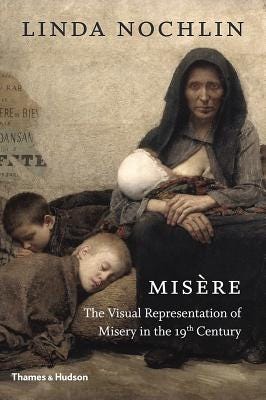
This is the final completed book by Linda Nochlin, one of the first and most influential feminist art critics. In short, she’s interested in what a nineteenth-century Frenchman called “misère,” a state of abject physical and moral poverty that arose in the 1800s in the wake of European industrialization.
The book is less exhaustive than its title suggests. Nochlin’s introduction disclaims any attempt at thoroughness; rather, she examines a few representative cases from Western art — depictions of Ireland and the famine, portrayals of prostitutes and their clients, etc. — to shed light on her vast subject. Even within its limitations, Misère isn’t an unqualified success. The component chapters arose from lectures and articles Nochlin wrote over her final decade, and so certain ideas and concepts are explained and re-explained throughout. The author died before the book was published, and I wonder what it could have been if only she’d had more time and vigor to polish it.
'Broadsword Calling Danny Boy': Watching Where Eagles Dare by Geoff Dyer (Vintage)
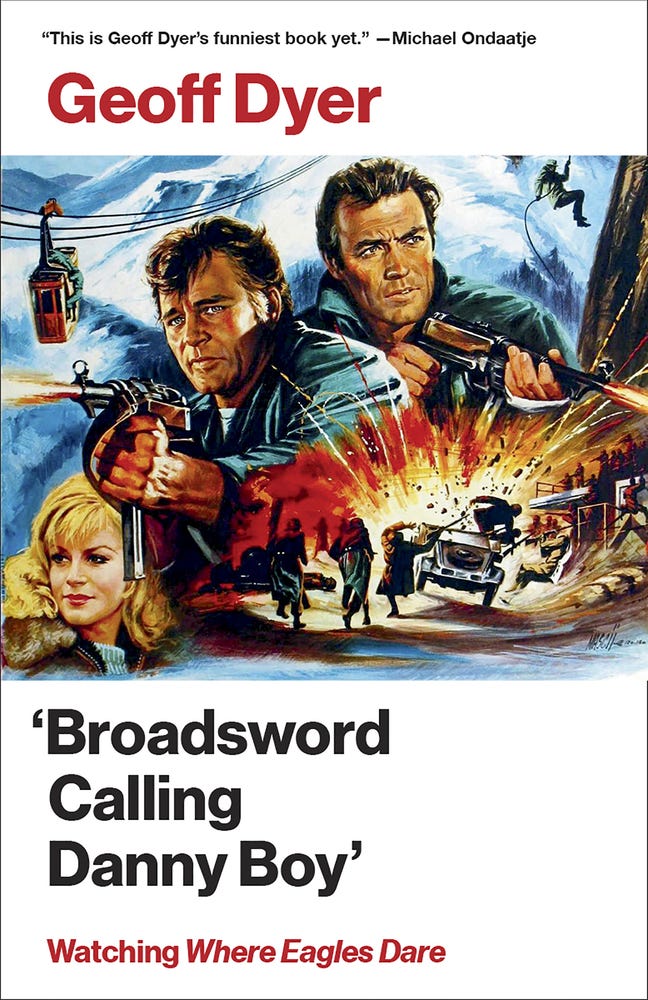
A few years back, Geoff Dyer got away with releasing a whole book about a single movie, Andrei Tarkovsky’s stately and enigmatic Stalker. Anyone hoping that Dyer would return to slow cinema for his second book on film will be disappointed; but everyone else will find this recapitulation/riff a delight. More a work of comedy than criticism, and all the better for it. I’m not sure that I learned anything, but I laughed out loud several times.
In his afterword, Dyer says that if he ever writes another book about a single film, that book would be about John Boorman’s Point Blank. Yes, please.
The Real Cool Killers by Chester Himes (Vintage/Black Lizard)
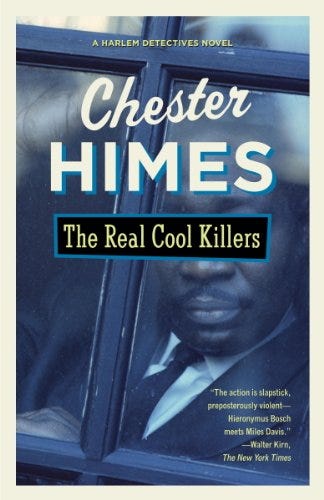
If you read this in the thrill-seeking spirit of its first American readers, who paid thirty-five cents for an Avon paperback printed on crummy stock, you’d be satisfied. Within the first twenty pages, there are two fatal shootings, one injured bystander, one man rushed to the hospital with his arm severed by an axe, and a whole neighborhood under lockdown. Of course, today’s readers are more sophisticated, and recognize that Himes had a great deal to say about his native country.
Reading this second Harlem detective novel, it’s hard not to think about how little has changed in the past sixty years. When the cops lock down several blocks and begin searching each building room by room, it’s not because they can’t stand that a murder has taken place, it’s because the victim — it turns out he had a predilection for young girls — was white.
The two detectives, Coffin Ed Johnson and Grave Digger Jones, are fascinating characters, violent enforcers of an order they don’t trust but partially believe in.
I’ll be reading more of these books, and soon.
By Force Alone by Lavie Tidhar (Tor)
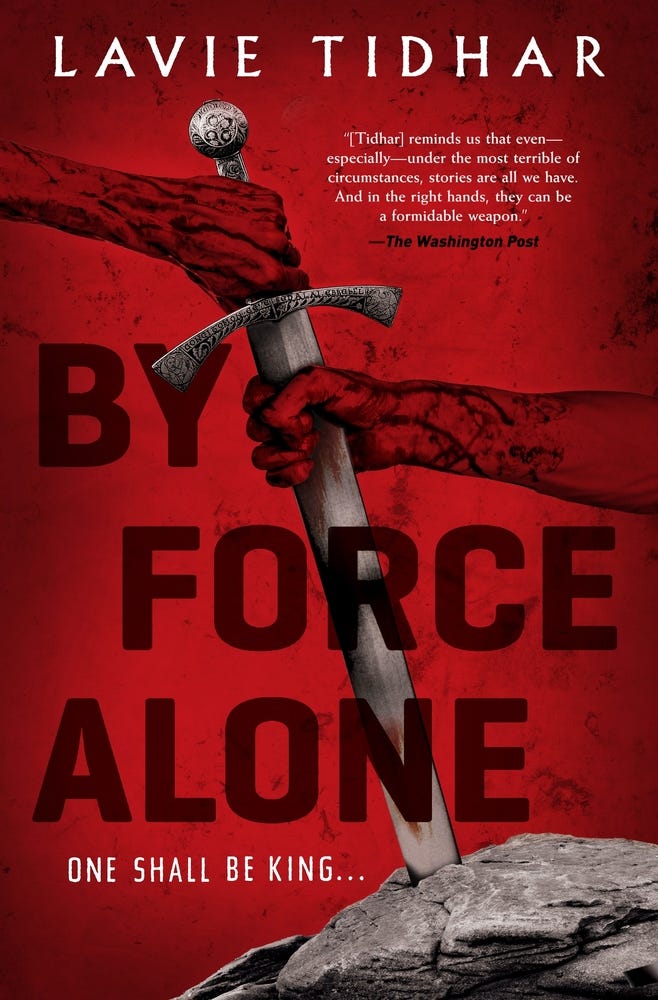
Cynical, clever postmodern take on the Matter of Britain for the age of Brexit: The knights are drug pushers and backstabbers, everyone’s in it for their own, etc. But really can you expect a pious take on Arthur from a writer who, a few years back, wrote an alternate history detective novel starring Hitler?
My review for Tor.com is forthcoming.
Canaan by Geoffrey Hill (Mariner/HMH, but also available in Broken Hierarchies)
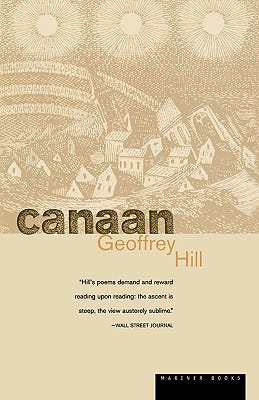
The late poet Geoffrey Hill was fabled for his verse’s difficulty; there’s scarcely a poem in Canaan I can confidently interpret, even after multiple readings. I find myself reading less for sense, though I try, than for the stern allusive beauty of Hill’s words. Canaan is much concerned with failures of democracy and with indifference to history; Hill speaks in sorrow and in anger, and even his rare words of praise are alloyed with regret and uncertainty.
For Hill, these lines qualify as straightforward: “Evil is not good’s absence but gravity’s / everlasting bedrock and its fatal chains / inert, violent, the suffrance of our days.”
A poem on John Constable, his art, and his grief closes thus: “a perceptible radiance — arched and spectral — / the abrupt rainbow’s errant visitation.”

I’ve ordered a book of Hill’s essays; perhaps the prose will shed further light on the poems?
The Master of Ballantrae by Robert Louis Stevenson (Innumerable editions but I read a dirt-cheap Dover copy)
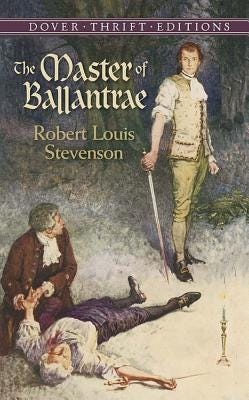
Robert Louis Stevenson wrote two stories, Treasure Island and The Strange Case of Dr. Jekyll and Mr. Hyde, that everyone knows, so when I say this is a lesser-known story, I just mean that it never achieved universal recognition.
The Master of Ballantrae has the satanic double theme of Jekyll and Hyde and the derring-do of Treasure Island, but it doesn’t come off as well as either. Two brothers from a Scottish noble family, one dissolute, cruel, and charismatic, the other plodding, bland, and virtuous, attempt to destroy each other in the eighteenth century. There are storms at sea, pirate attacks, live burial, vanished treasure, scalpings, and duels; the ending is not happy.
Is this Stevenson at his best? I don’t think it is. But it reminded me why Stevenson remains one of my favorite nineteenth-century writers. I’m sure I’ll return to Treasure Island before this summer is out, and I was delighted to remember I have a copy of his collection Island Nights’ Entertainments on hand.
Reading this book and reflecting on the state of the world, I was struck by this line about the nature of the Master’s evil: “Certain, at least, that he loved the note of his own tongue, as, indeed, he entirely loved all the parts and properties of himself; a sort of imbecility which almost necessarily attends on wickedness.”
Movies
A Hidden Life (2019, d. Terrence Malick) (Available for rental or on a barebones Blu-Ray)
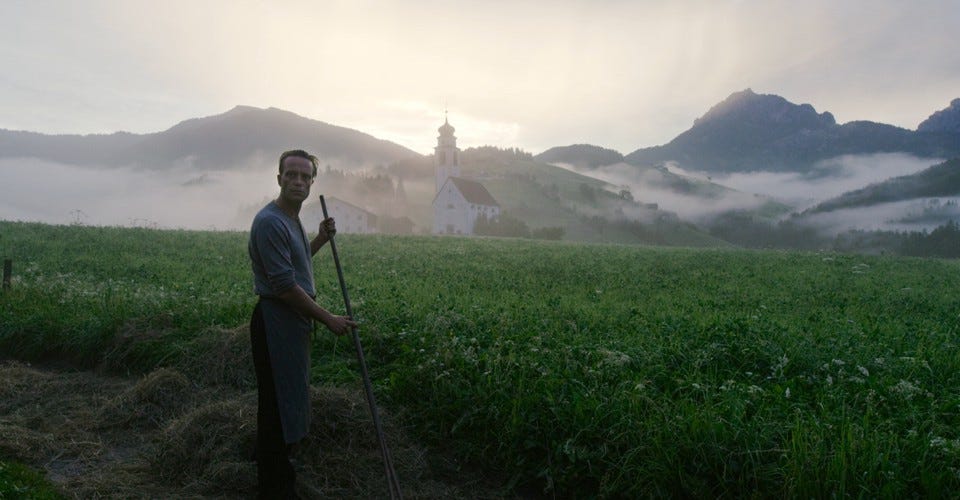
Franz Jägerstätter was an Austrian farmer executed by the Nazis for refusing to swear loyalty to Hitler. Terrence Malick’s film of his life eschews conventional biopic trappings, omits psychologizing, and never grants its hero a rousing speech. This is probably the most “plotted” movie Malick has directed since The New World back in 2005, but the associative editing, the dreamlike fugues, the darting gaze, and the oblique voiceovers of his last several features remain in A Hidden Life.
Malick marvels at Jägerstätter’s holy obstinacy, but he wouldn’t claim to understand it. A beautiful film that lets Franz Jägerstätter’s life and actions retain their fundamental mystery.
I think it’s a masterpiece.
Exorcist II: The Heretic (1977, d. John Boorman) (Rented on streaming)

John Boorman made some bad films, but their badness is usually redeemed by their strangeness. Is the script a mess? Yes. Is the movie scary? Not at all. Is the device of the telepathy machine ludicrous? Absolutely. Do I believe, or even comprehend, the nature of the crisis of faith that Richard Burton’s priest undergoes? Not really. Are the film’s visions of “Africa” exoticizing, stereotyped, and ridiculous? Certainly. Did I still like the movie? Believe it or not, I did.
Exorcist II isn’t an unfairly maligned lost classic, but on its own unlikely and unusual terms, it’s a success.
Gun Crazy (1950, d. Joseph H. Lewis) (Rented on streaming)
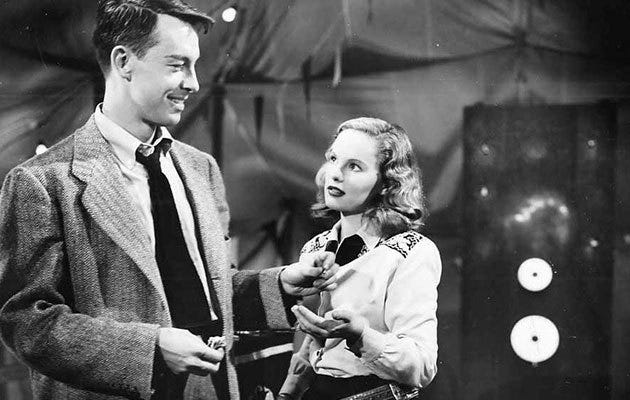
Low-budget noir about a man (John Dall) and a woman (Peggy Cummins) and the guns that obsess them both as they rob and rut their way across the country. How did this pass the censors? The subtext really pokes its head into the text here in a way that should penetrate the mind of the most literal viewer. Which is not to say that Gun Crazy’s interest is solely Freudian: It’s one of the best-made B-pictures of the fifties; the long tracking shots of the bank-robbing couple and the ending in a misty swamp are especially memorable.
A prologue features a very young Russ Tamblyn playing the eventual bank robber. He goes before a judge after he steals a six-shooter from a hardware store window. If only he’d been sent to a shrink instead of reform school. But then, of course, we wouldn’t have this movie.
Lifeboat (1944, d. Alfred Hitchcock) (Rented on streaming)
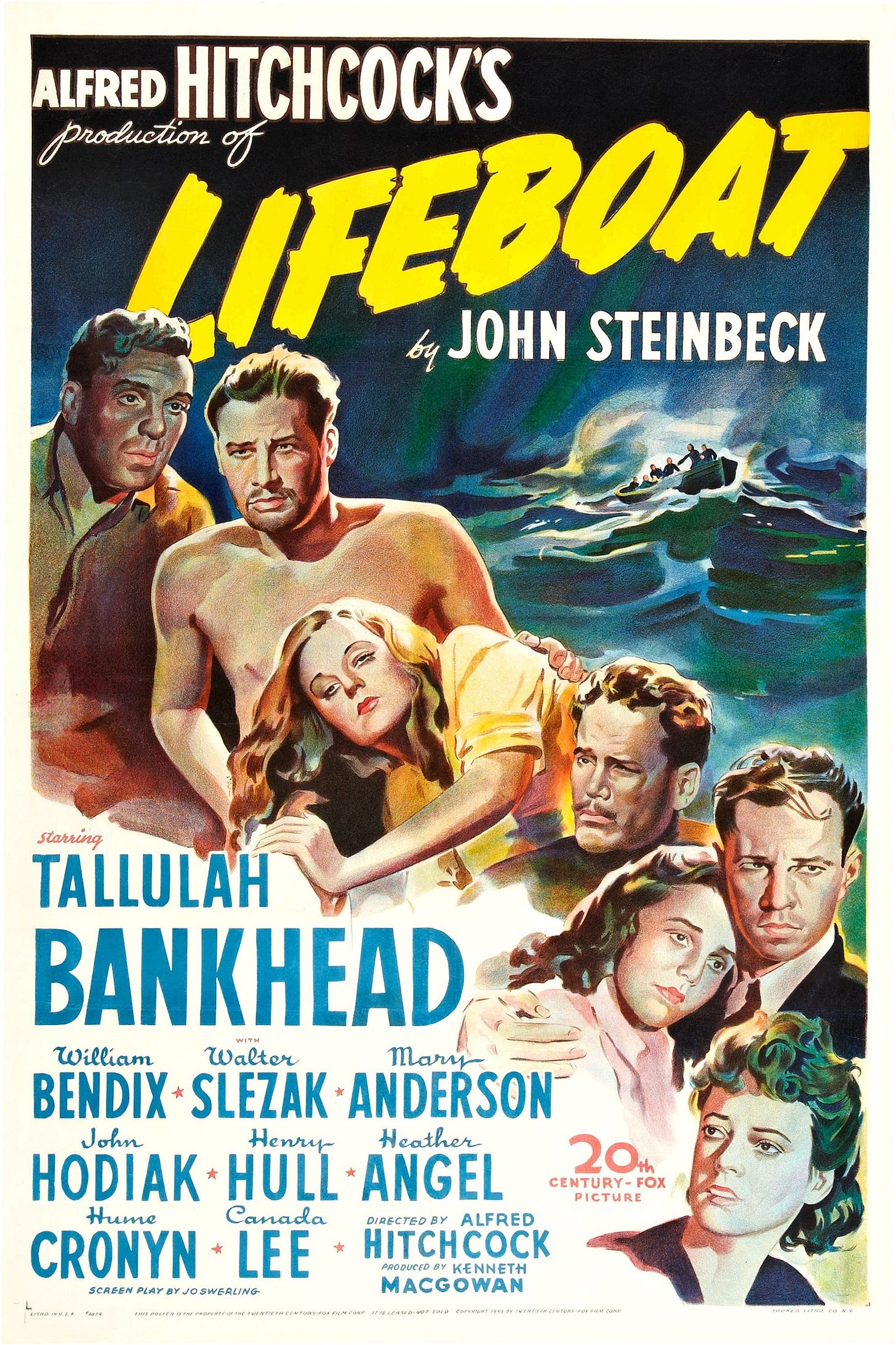
Wartime propaganda film unusually critical of the United States and uncomfortably acknowledging the twisted humanity of some Axis soldiers. Oh, and the entire film takes place in a single location, the sole lifeboat to escape the U-boat sinking of a merchant marine ship.The story came from John Steinbeck, though he didn’t write the screenplay, and you can see Steinbeck’s concerns all over the movie’s 96 minutes. The titan of industry on the lifeboat is pompous, absentmindedly racist, and genially incompetent; the tattooed working-class sometime fellow traveler is, for all his anger and ego, the male romantic lead.
Lifeboat is also, so far as I can remember, the sole Hitchcock film to address race in any substantive way: The lone black man on the lifeboat is the most admirable of the motley crew. Hitchcock knows it, the script knows it, but the characters, true to life, never quite realize. The actor who played him, Canada Lee, was blacklisted and called before HUAC. He died of kidney disease before he could appear before the Committee. Years earlier, Lee had refused to denounce Paul Robeson. Had he lived, it’s hard to imagine that he would have named names.
